-
 Bitcoin
Bitcoin $106,437.2012
0.82% -
 Ethereum
Ethereum $2,442.5287
0.82% -
 Tether USDt
Tether USDt $1.0005
-0.02% -
 XRP
XRP $2.1812
-0.27% -
 BNB
BNB $645.1327
0.45% -
 Solana
Solana $146.2379
0.39% -
 USDC
USDC $0.9999
-0.01% -
 TRON
TRON $0.2751
0.92% -
 Dogecoin
Dogecoin $0.1662
-0.23% -
 Cardano
Cardano $0.5827
-1.22% -
 Hyperliquid
Hyperliquid $37.5225
0.04% -
 Bitcoin Cash
Bitcoin Cash $479.0877
4.02% -
 Sui
Sui $2.7846
-3.27% -
 Chainlink
Chainlink $13.3576
0.84% -
 UNUS SED LEO
UNUS SED LEO $9.0252
-1.20% -
 Stellar
Stellar $0.2455
-1.07% -
 Avalanche
Avalanche $18.0680
-1.81% -
 Toncoin
Toncoin $2.8948
-1.07% -
 Shiba Inu
Shiba Inu $0.0...01164
-1.65% -
 Litecoin
Litecoin $85.0637
-0.06% -
 Hedera
Hedera $0.1526
-0.89% -
 Monero
Monero $316.2941
0.78% -
 Ethena USDe
Ethena USDe $1.0003
-0.04% -
 Polkadot
Polkadot $3.4113
-1.87% -
 Dai
Dai $1.0000
-0.01% -
 Bitget Token
Bitget Token $4.4488
5.16% -
 Uniswap
Uniswap $7.1740
3.09% -
 Pi
Pi $0.5968
11.43% -
 Pepe
Pepe $0.0...01010
-0.65% -
 Aave
Aave $264.3189
0.40%
Application scenarios of USDC in the DeFi ecosystem
USDC, a stablecoin, fuels DeFi lending, DEX trading, yield farming, and insurance, offering ease of use but raising concerns about its centralized nature and potential de-pegging risks.
Mar 24, 2025 at 10:29 pm
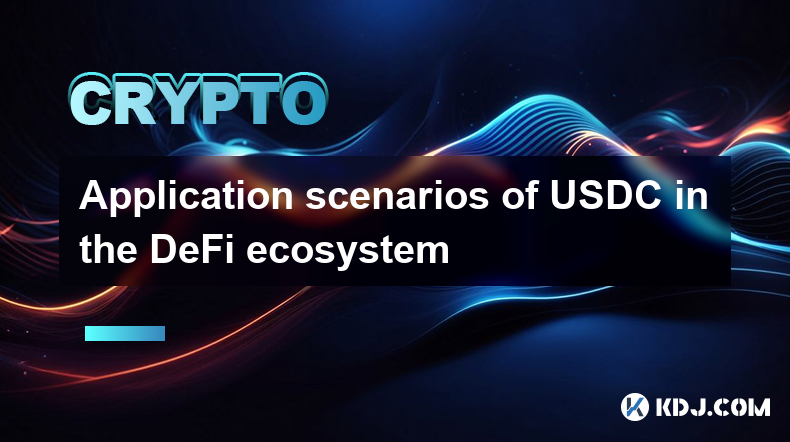
Key Points:
- USDC's role as a stablecoin in DeFi lending and borrowing.
- USDC's utilization in decentralized exchanges (DEXs).
- USDC's involvement in yield farming and staking strategies.
- The use of USDC in decentralized finance (DeFi) insurance protocols.
- Risks and considerations when using USDC in DeFi.
Application Scenarios of USDC in the DeFi Ecosystem
USDC, a USD-pegged stablecoin, plays a crucial role within the decentralized finance (DeFi) ecosystem. Its stability and ease of use make it a preferred choice for various applications. Understanding these applications is key to navigating the complex world of DeFi.
USDC in Lending and Borrowing Protocols:
Many DeFi lending and borrowing platforms utilize USDC as a collateral asset. Users can deposit USDC to earn interest, and borrow other cryptocurrencies against it. This provides liquidity to the platform and allows users to leverage their holdings. Popular platforms like Aave, Compound, and MakerDAO all support USDC lending and borrowing. The interest rates fluctuate based on supply and demand.
USDC in Decentralized Exchanges (DEXs):
Decentralized exchanges rely heavily on stablecoins for trading pairs. USDC's stability minimizes price volatility when paired with other, more volatile cryptocurrencies. This allows traders to execute trades with greater certainty about the value of their assets. Uniswap, SushiSwap, and Curve Finance are examples of DEXs extensively using USDC. Trading fees are typically paid in USDC or the traded asset.
USDC in Yield Farming and Staking:
Yield farming involves lending or staking assets to earn high returns. USDC is a popular choice for yield farming due to its stability and the relatively low risk associated with it. Various DeFi protocols offer yield farming opportunities with USDC, often involving liquidity pools or staking pools. However, it's crucial to understand the risks involved, as returns are not guaranteed.
USDC in DeFi Insurance Protocols:
DeFi insurance protocols use USDC as a means of covering potential losses. Users can purchase insurance policies using USDC to protect against smart contract vulnerabilities, exploits, or other risks within DeFi. These protocols offer varying levels of coverage and premium costs. The use of USDC simplifies the insurance process by offering a stable premium payment method.
Risks and Considerations:
While USDC offers several advantages, it's important to acknowledge potential risks. Centralization is a major concern, as Circle, the issuer of USDC, holds a significant amount of control. This contrasts with the decentralized nature of many other cryptocurrencies. Audits and transparency are crucial for maintaining trust in USDC's peg.
USDC in Automated Market Makers (AMMs):
Automated Market Makers (AMMs) form the backbone of many DEXs. These algorithms automatically price assets based on liquidity pool balances. USDC's presence in these pools provides stability and facilitates efficient trading. Its stability helps to prevent large price swings within the AMM. However, impermanent loss is a risk associated with providing liquidity in AMMs.
USDC in Stablecoin Swaps:
Stablecoin swaps allow users to exchange one stablecoin for another. This is often done to take advantage of arbitrage opportunities or to move funds between different platforms. USDC is frequently involved in these swaps, offering a reliable and low-risk way to transfer value between stablecoins. Transaction fees vary depending on the platform used for the swap.
USDC in Governance Tokens:
Some DeFi protocols utilize governance tokens that allow users to participate in decision-making. While not directly using USDC for governance, users may acquire governance tokens using USDC, giving them a voice in the protocol's development. The voting power is often proportional to the amount of governance tokens held.
USDC and its Integration with Other DeFi Protocols:
USDC seamlessly integrates with a wide range of DeFi protocols, creating a cohesive ecosystem. Its widespread adoption ensures accessibility and liquidity across different platforms. This interoperability simplifies the use of DeFi services, allowing users to easily move their funds and participate in various activities. However, it’s vital to research individual protocols thoroughly before interacting with them.
Frequently Asked Questions:
Q: Is USDC truly decentralized?
A: No, USDC is not fully decentralized. It's issued and managed by Circle, a centralized company. This contrasts with decentralized stablecoins that aim to maintain their peg through algorithmic mechanisms.
Q: What are the risks associated with using USDC in DeFi?
A: Risks include smart contract vulnerabilities, platform failures, and the potential for de-pegging from the US dollar due to regulatory changes or unexpected market events. Furthermore, the centralized nature of USDC poses a risk.
Q: How does USDC maintain its peg to the US dollar?
A: Circle maintains a reserve of US dollars and other highly liquid assets to back each USDC token in circulation, aiming for a 1:1 ratio. Regular audits are conducted to verify this reserve.
Q: What are the advantages of using USDC in DeFi?
A: Advantages include stability, ease of use, wide adoption, and its integration with various DeFi platforms. This makes it a convenient and relatively low-risk option for many DeFi applications.
Q: Are there any alternatives to USDC in the DeFi space?
A: Yes, other stablecoins like Tether (USDT), Dai (DAI), and Binance USD (BUSD) exist and are used in the DeFi ecosystem. Each has its own advantages and disadvantages, including varying degrees of centralization and transparency.
Disclaimer:info@kdj.com
The information provided is not trading advice. kdj.com does not assume any responsibility for any investments made based on the information provided in this article. Cryptocurrencies are highly volatile and it is highly recommended that you invest with caution after thorough research!
If you believe that the content used on this website infringes your copyright, please contact us immediately (info@kdj.com) and we will delete it promptly.
- DEX Race Heats Up: Paradigm's Bet on GTE and the Startup Investment Landscape
- 2025-06-25 14:55:12
- Pepe Coin's Wild Ride: Liquidation Zones, Trump's Crypto Crash, and the Allure of APY
- 2025-06-25 14:55:12
- Passive Income, Cryptos, and ROI: Troller Cat Leads the Meme Coin Revolution in 2025
- 2025-06-25 15:00:12
- Cryptos, Buy Now, Beta Version: Riding the Meme Coin Wave with Troller Cat and Beyond
- 2025-06-25 15:00:12
- Athena Bitcoin & Crypto ATMs: Scam Crackdown & Resale Shares?
- 2025-06-25 15:05:12
- Microsoft, Xbox, Layoffs: Navigating the Shifting Landscape
- 2025-06-25 15:05:12
Related knowledge
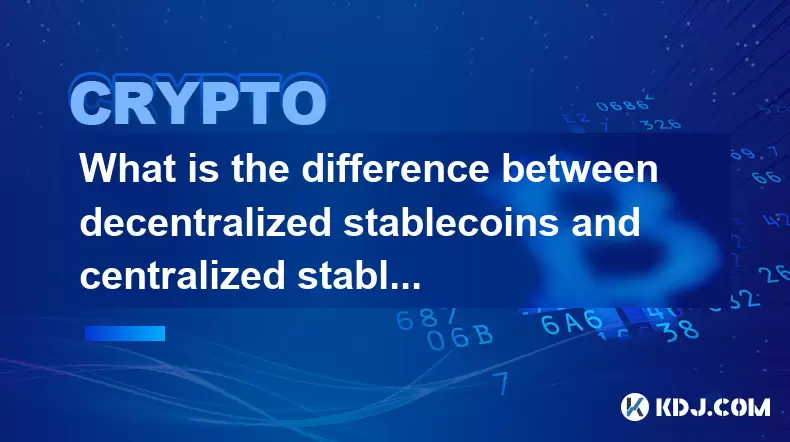
What is the difference between decentralized stablecoins and centralized stablecoins? Pros and cons comparison
Jun 15,2025 at 09:42am
What Are Stablecoins and Why Do They Matter?Stablecoins are a category of cryptocurrencies designed to maintain a stable value, usually pegged to an external asset such as the U.S. dollar, gold, or even other fiat currencies. Their primary purpose is to reduce the volatility typically associated with cryptocurrencies like Bitcoin or Ethereum. This stabi...
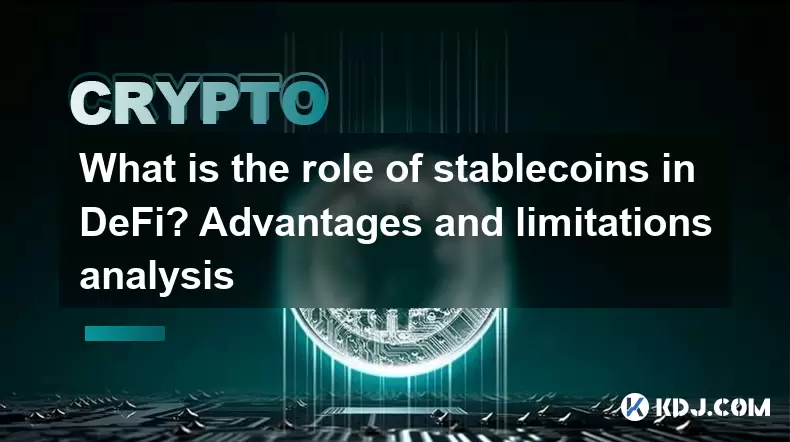
What is the role of stablecoins in DeFi? Advantages and limitations analysis
Jun 14,2025 at 06:28am
Understanding Stablecoins in the DeFi EcosystemStablecoins play a pivotal role in the decentralized finance (DeFi) landscape by providing a bridge between volatile cryptocurrencies and traditional fiat currencies. Unlike Bitcoin or Ethereum, stablecoins are designed to maintain a consistent value, typically pegged to assets like the US Dollar or gold. T...

How do algorithmic stablecoins work? Potential risks and market impact
Jun 12,2025 at 02:07pm
Understanding Algorithmic StablecoinsAlgorithmic stablecoins are a type of cryptocurrency designed to maintain a stable value relative to a specific asset, usually the US dollar. Unlike traditional stablecoins like Tether (USDT) or USD Coin (USDC), which are backed by reserves such as cash or short-term bonds, algorithmic stablecoins rely on smart contr...
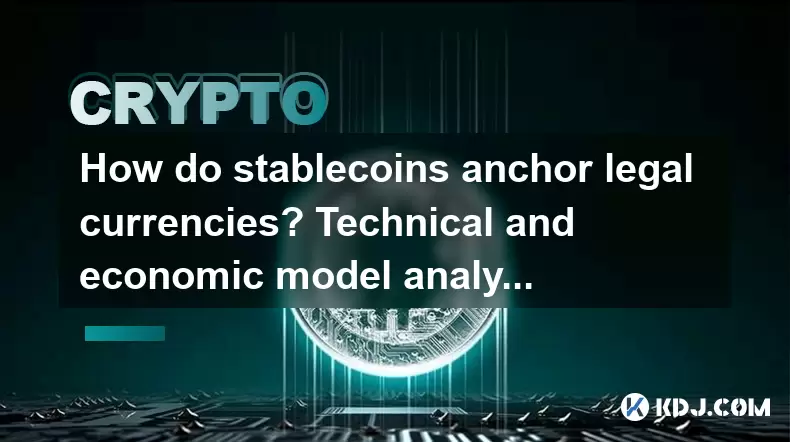
How do stablecoins anchor legal currencies? Technical and economic model analysis
Jun 16,2025 at 08:43am
Understanding the Concept of StablecoinsStablecoins are a category of cryptocurrencies designed to maintain a stable value relative to a specific asset, most commonly fiat currencies like the U.S. dollar or Euro. Unlike volatile cryptocurrencies such as Bitcoin and Ethereum, stablecoins aim to provide price stability by anchoring their value to an exter...
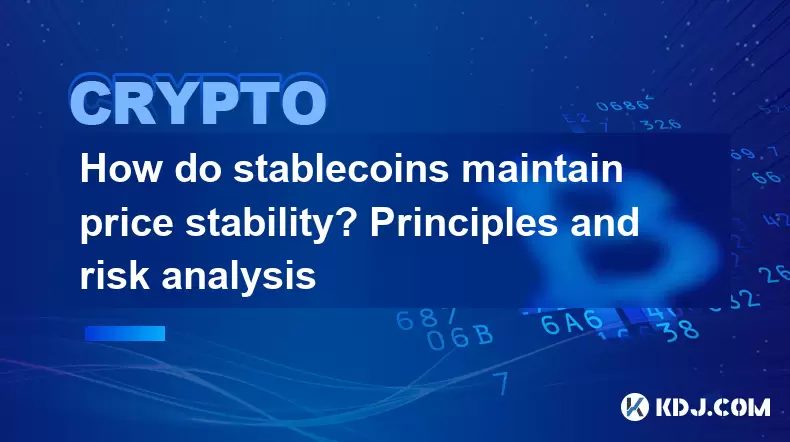
How do stablecoins maintain price stability? Principles and risk analysis
Jun 11,2025 at 12:01am
Understanding the Mechanisms Behind Stablecoin StabilityStablecoins are a category of cryptocurrencies designed to minimize price volatility, often pegging their value to a fiat currency such as the US dollar. The core principle behind stablecoins is to offer the benefits of blockchain technology—like fast and decentralized transactions—while maintainin...
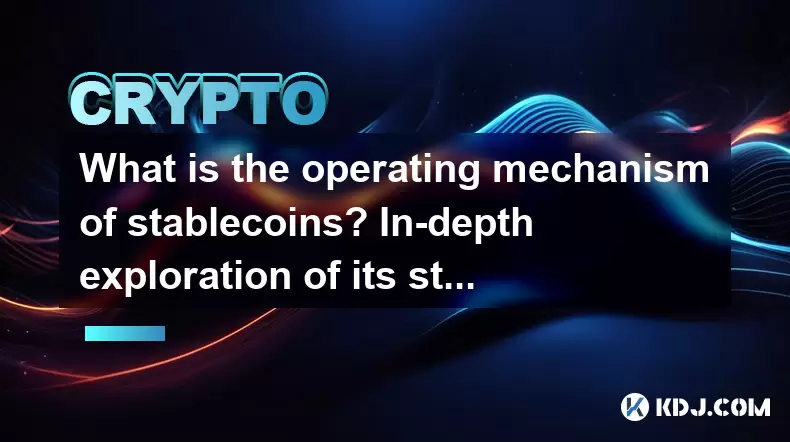
What is the operating mechanism of stablecoins? In-depth exploration of its stability principle
Jun 10,2025 at 09:28pm
Understanding the Core Concept of StablecoinsStablecoins are a unique category within the cryptocurrency market, designed to address one of the most significant drawbacks of traditional cryptocurrencies: price volatility. Unlike Bitcoin or Ethereum, which can experience dramatic price swings in short periods, stablecoins aim to maintain a stable value r...

What is the difference between decentralized stablecoins and centralized stablecoins? Pros and cons comparison
Jun 15,2025 at 09:42am
What Are Stablecoins and Why Do They Matter?Stablecoins are a category of cryptocurrencies designed to maintain a stable value, usually pegged to an external asset such as the U.S. dollar, gold, or even other fiat currencies. Their primary purpose is to reduce the volatility typically associated with cryptocurrencies like Bitcoin or Ethereum. This stabi...

What is the role of stablecoins in DeFi? Advantages and limitations analysis
Jun 14,2025 at 06:28am
Understanding Stablecoins in the DeFi EcosystemStablecoins play a pivotal role in the decentralized finance (DeFi) landscape by providing a bridge between volatile cryptocurrencies and traditional fiat currencies. Unlike Bitcoin or Ethereum, stablecoins are designed to maintain a consistent value, typically pegged to assets like the US Dollar or gold. T...

How do algorithmic stablecoins work? Potential risks and market impact
Jun 12,2025 at 02:07pm
Understanding Algorithmic StablecoinsAlgorithmic stablecoins are a type of cryptocurrency designed to maintain a stable value relative to a specific asset, usually the US dollar. Unlike traditional stablecoins like Tether (USDT) or USD Coin (USDC), which are backed by reserves such as cash or short-term bonds, algorithmic stablecoins rely on smart contr...

How do stablecoins anchor legal currencies? Technical and economic model analysis
Jun 16,2025 at 08:43am
Understanding the Concept of StablecoinsStablecoins are a category of cryptocurrencies designed to maintain a stable value relative to a specific asset, most commonly fiat currencies like the U.S. dollar or Euro. Unlike volatile cryptocurrencies such as Bitcoin and Ethereum, stablecoins aim to provide price stability by anchoring their value to an exter...

How do stablecoins maintain price stability? Principles and risk analysis
Jun 11,2025 at 12:01am
Understanding the Mechanisms Behind Stablecoin StabilityStablecoins are a category of cryptocurrencies designed to minimize price volatility, often pegging their value to a fiat currency such as the US dollar. The core principle behind stablecoins is to offer the benefits of blockchain technology—like fast and decentralized transactions—while maintainin...

What is the operating mechanism of stablecoins? In-depth exploration of its stability principle
Jun 10,2025 at 09:28pm
Understanding the Core Concept of StablecoinsStablecoins are a unique category within the cryptocurrency market, designed to address one of the most significant drawbacks of traditional cryptocurrencies: price volatility. Unlike Bitcoin or Ethereum, which can experience dramatic price swings in short periods, stablecoins aim to maintain a stable value r...
See all articles
























































































